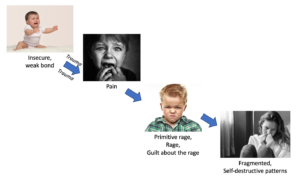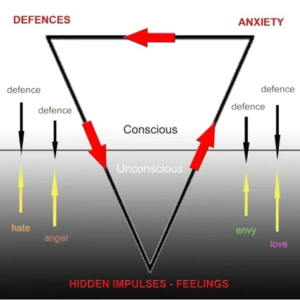A Psychotherapy You’ve Likely Never Heard Of
ISTDP (Intensive Short Term Dynamic Psychotherapy) is a unique model of experiential psychotherapy that less than 1% of therapists in the world practice.
ISTDP’s therapeutic approach and interventions were specifically designed for patients whose traditional therapy did not work. ISTDP has its roots in psychoanalytic theory. It uses a special way of looking at the causes of suffering and how to attain long-lasting healing (from what is usually a lifetime of suffering), especially for those who have given up on psychological help.
ISTDP’s Roots
ISTDP was invented by Habib Davanloo in the 1970’s as a result of his frustrations with the techniques he was learning during his residency as a psychiatrist and trainee of traditional psychoanalysis. He realized that many patients were experiencing drawn out therapies with little-to-no data-based evidence that any actual benefit was being gained. In his frustration, he taped over 10,000 hours of psychotherapy and combined the most effective techniques into a more efficient psychoanalytic approach that we now know as ISTDP.
The Causes of Suffering
ISTDP postulates that most psychological suffering comes from trauma rooted in the attachment history of the patient. This attachment trauma is then“replayed” over and over in the life of the patient in what we may see as a repetitive behavioral pattern in relation to others. In search of a better ending to the story that went awry in childhood, patients tend to repeat (instead of remember) the trauma in their current relationships. In most cases these relationships will ultimately end in the same way that the childhood trauma did.

Figure 1: Trauma Created Behavior Patterns
ISTDP’s Unique Characteristics
- An entirely unique way of conceptualizing anxiety
- An entirely unique way of conceptualizing emotions
- A huge emphasis on relational patterns with the therapist
- An emphasis on symptom removal not reduction
- Experiential, ISTDP aims to create change through new experiences and insights (not dogmatic teaching or stoic correction)
The Path to Healing

ISTDP practitioners work in an extremely detail-oriented manner to help the patient increase their capacity to experience complex emotions.
Therapists support the patient to tolerate (instead of avoiding) the anxiety sparked by these usually unconscious emotional experiences. This process of working at the patient’s highest capacity allows for the optimal level of anxiety for both structural changes in the brain and permanent changes in psychic structure. These positive changes tend to keep continuing even after the treatment has ended.
ISTDP is one of the few treatment models that has evidence of long-term, lasting change with significant patient gains even after sessions end.
ISTDP practitioners spend a large amount of time emphasizing the relational patterns with the therapists that are live in the room during treatment. Through very specific, targeted interventions, the following things are brought to consciousness in what is termed as, “the unlocking of the unconscious.”:
- the patient’s unconscious patterns of relation
- the ways they actually end up hurting themselves to avoid buried
- painful emotions and the unconscious root of attachment trauma
This is a process in which the original unconscious conflicts are re-experienced in the present and reworked as to set the patient free from repetitive effects in their current lives.
The Typical ISTDP Patient
ISTDP can be used for almost any and all types of psychological suffering.
The evidence for its effectiveness for a huge variety of psychological disturbances is abundant.
As noted previously, ISTDP was originally invented to treat those patients whom no other treatment had any effect on, including patients who seemingly had an inner need to suffer despite any intervention or help that was given. ISTDP was also developed to break through the resistance of this group of patients to create changes in the psyche at a fundamental and profound level. In light of this, ISTDP is particularly useful for patients who have tried everything and seem to not be getting any better.
ISTDP is a model of therapy that very few have heard of, and very few are qualified to practice.
While the model is rooted in psychoanalytic theory, its specific techniques and interventions have been proven to increase the effectiveness of other therapy models such as CBT and DBT. David Malan once said, “Freud discovered the unconscious, but Davanloo discovered how to work with it therapeutically.” This sentiment perfectly captures the combination of the absolute foundation of all psychology and the implementation of actual effective techniques to create long lasting change for patients. This IS the treatment for those whom everything else has failed, for whom hope seems lost.
